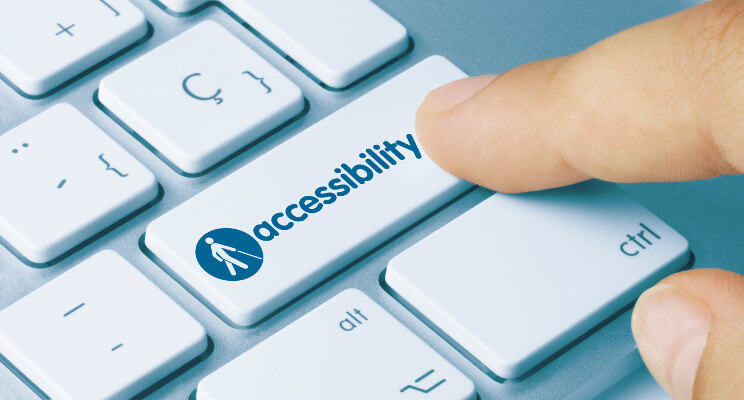Is your business website digitally accessible? It’s hard to answer that without knowing exactly what digital accessibility is, and how it impacts your website visitors.
So let’s start at the beginning. Some interesting stats to set the stage:
- According to 2020* ONS data, 92% of UK adults were recent users of the Internet, of which 99% were between the ages of 16 and 44.
- Internet usage by those over the age of 75 has nearly doubled since 2013.
- The number of disabled** adults who were recent users of the Internet in 2020 increased to 11 million (81% of disabled adults) from 10 million in 2019.
*This data was collected between January and March of 2020, before the impact of COVID but considering how much more the Internet has been utilised since then it’s probably safe to assume that the numbers today will be slightly higher than when collected in 2020.
**The term ‘disabled’ is used to refer to those who self-assess that they have a disability in line with the Equality Act of 2010.
What is website accessibility?
Website accessibility means that a website has been designed and developed so that people with impairments and disabilities can use it, including those using assistive technologies like screen readers. However, it also means that people without disabilities can use it. In essence, no matter who your website visitor is, they should be able to use your website as well as the next person who visits it, whether they suffer from an impairment or not.
Now, this is quite wide-ranging – how can you, as a business owner, expect to know how your website needs to be designed and developed to allow everyone to use it easily? Luckily for us, there is a detailed set of guidelines, created by the World Wide Web Consortium (W3C) – the body responsible for developing standards for the Web – known as WCAG (Web Content Accessibility Guidelines). These guidelines have been adopted by the UK government (and various other countries around the world) as the basis for website accessibility.
Accessibility for your business website
So now we know that there is an established and recognized set of guidelines to help make a website accessible, let’s cover how accessibility can help your business:
- Increase Market Reach
Having an accessible website means more people can use it – that is, not only people who suffer from disabilities but also those who may suffer from impairments e.g. people suffering from sight issues but are not blind – they may have difficulty in reading tiny text on a bright background. - Increase Brand Loyalty
When a web user finds a website that caters to their needs easily they are more likely to continue using it and to refer the site to their known and unknown networks e.g. via social media. This kind of positive word of mouth marketing is invaluable to a business. - Directly impact KPIs
An accessible website is a more user-friendly website, for everyone that visits it regardless of disability. By its very nature, a more user-friendly website makes the goals of the website that much more achievable whether it’s selling a service or product, capturing an email address for marketing, enhancing the brand of the business etc. - Reduce Legal Risk
Over the last two decades more and more governments and regulators have taken more seriously the rights of all people to be able to access digital services, like websites and apps, and have been reforming the law in order to be able to enforce the new regulations. In the UK, for example, all public sector websites need to be accessible, meeting WCAG v2.1 AA guidelines, and if they do not then to be able to explain why not and what is being done in order to meet compliance in a publicly accessible statement.Although the risk is not so great in the UK yet, it is only a matter of time before website users and bodies that represent disabled people begin to take legal action against the owners of websites that do not meet accessibility compliance.
So, how can you ensure your website begins to meet these accessibility guidelines? Follow us as this is the first of a series of articles we’ll be posting to help you get your head around the different compliance criteria.
Further reading: UX and the Importance of Web Accessibility (opens in a new tab)
Sources:





